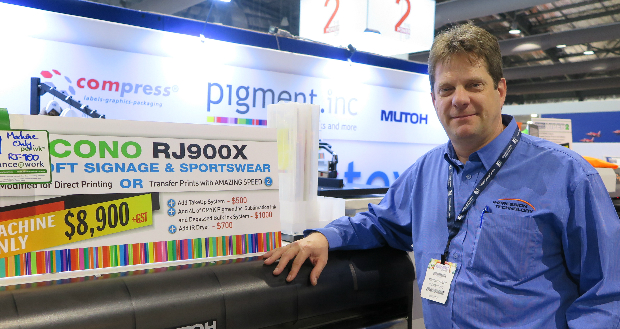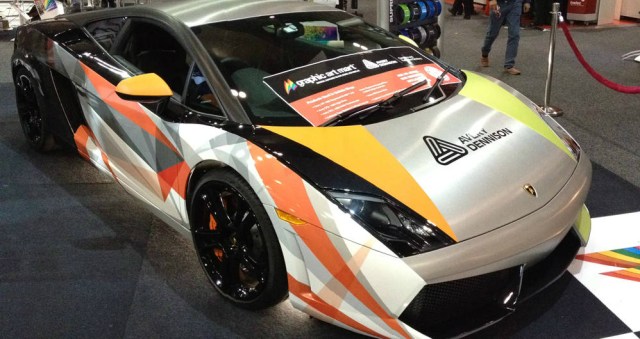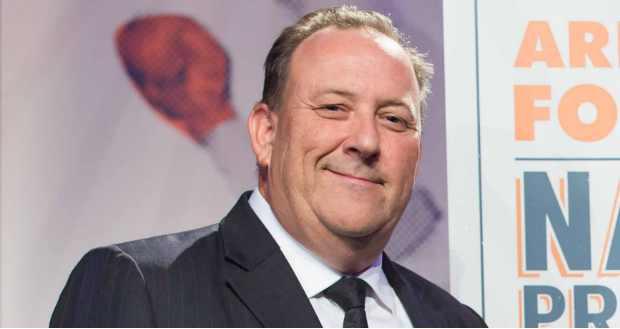
Impression Technology kicked off the recent Visual Impact show in Sydney with the debut of a new textile division, Pigmentinc, aiming to build custom packages for printers. Mix and match machines for the new division were on display alongside Impression’s established brand of direct to garment printers, DTG Digital. Pigmentinc is a wide format textile expansion for the R&D and manufacturing company, which has been making and selling its DTG Digital t-shirt printers for the past nine years. Marcus Adler, consultant, says he has been working with Impression CEO Steve Richardson on a textile solution that puts together the exact machinery a printer will need for the specific applications they are working on, no more, no less. He says, “We see a huge future for the Australian textile market, so we are looking to supply printers with the right machines to fit their business no matter what section of the market they choose to work in.”

Marcus Adler, consultant with Impression Technology
Though the general consensus among suppliers at the show was that Australia is currently lagging behind Europe and Asia in the uptake of textiles and soft signage thanks to a tendency to follow US trends, Adler says he expects the Aussie market to catch up. Impression is looking to cater to all textile applications with custom built machines. Adler says, “We are selling under the tagline: Everything textile. We can configure a system with different components to put together a package that will solve problems for a business. “The textiles sector covers a huge range of applications, from interior design, fashion garments, sports garments, consumer garments for retailers like Target, to flags, banners and signage. “All of these applications require a digital printer, yes, but you need different inks, pretreat solutions and finishing solutions – presses, steamers – depending on the inks. “Printers who go to a supplier looking for a textile solution should be aware that not all machines will suit their specific needs. You might be in flags and banners, but somebody might want to sell you something that will do window dressings. “Steve and I have spent nine months collecting and designing all of the components on offer, so printers can tell us what they are looking to print and we can provide them with exactly what they need.” Impression will add on application-specific tools to a base machine, which may cost $9000. A rotary heatpress set up, for example, might be a more functional choice than a flatbed when printing transfers for leggings, banners and teardrop flags. One of the division’s first clients, a custom wedding dress maker immigrating to Australia from the UK, required a textile printer that could print on natural fibres, silks and cottons, with reactive dyes. Adler says, “In England she did not need her own machine, she could hire a printer to do the job for her, but she could not find anybody in Australia, so restarting her business here meant starting her own production house. “She is now not just printing her own work, she is doing interior wall panels, curtains, cushions and all sorts of jobs.” However, he says the most popular machine for Pigmentinc is currently proving to be the company’s $24,000 entry level flag and banner maker package. He says, “From what we have seen at the show, there is massive demand for the flag and banner maker. It allows established sign companies who are outsourcing their teardrop banner work to bring it inhouse for less than $25,000. “You sit it in the corner of your production room and print teardrop banners every day of the week. One signwriter after another has come to our stand and said it is easy, it will fit in my workshop, I know the price and I know I don’t have to run around to get it right. “We will put it in, get it up and running with the software, and after a day of installation and training, you will be printing flags. Simple as that.” Impression can also provide financing packages through Finance@work, including a rental programme that will allow printers swap hardware in and out and upgrade their stable. Adler says, “You could rent a small machine today, and as your business grows swap it out for a bigger, higher speed machine. We aim to give printers better flexibility in the hardware they bring in to produce their work and ultimately grow their business.”
Comment below to have your say on this story.
If you have a news story or tip-off, get in touch at editorial@sprinter.com.au.
Sign up to the Sprinter newsletter



